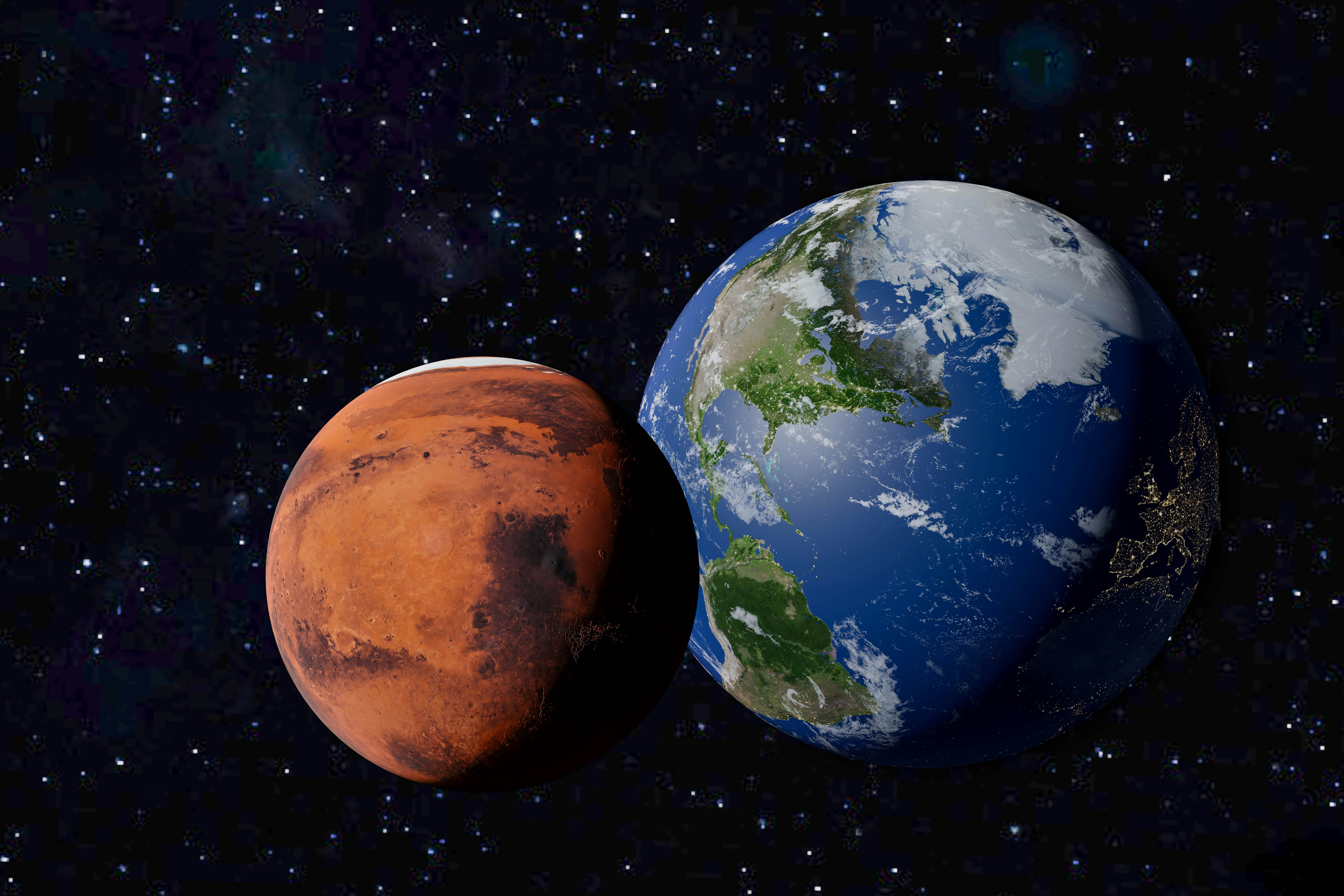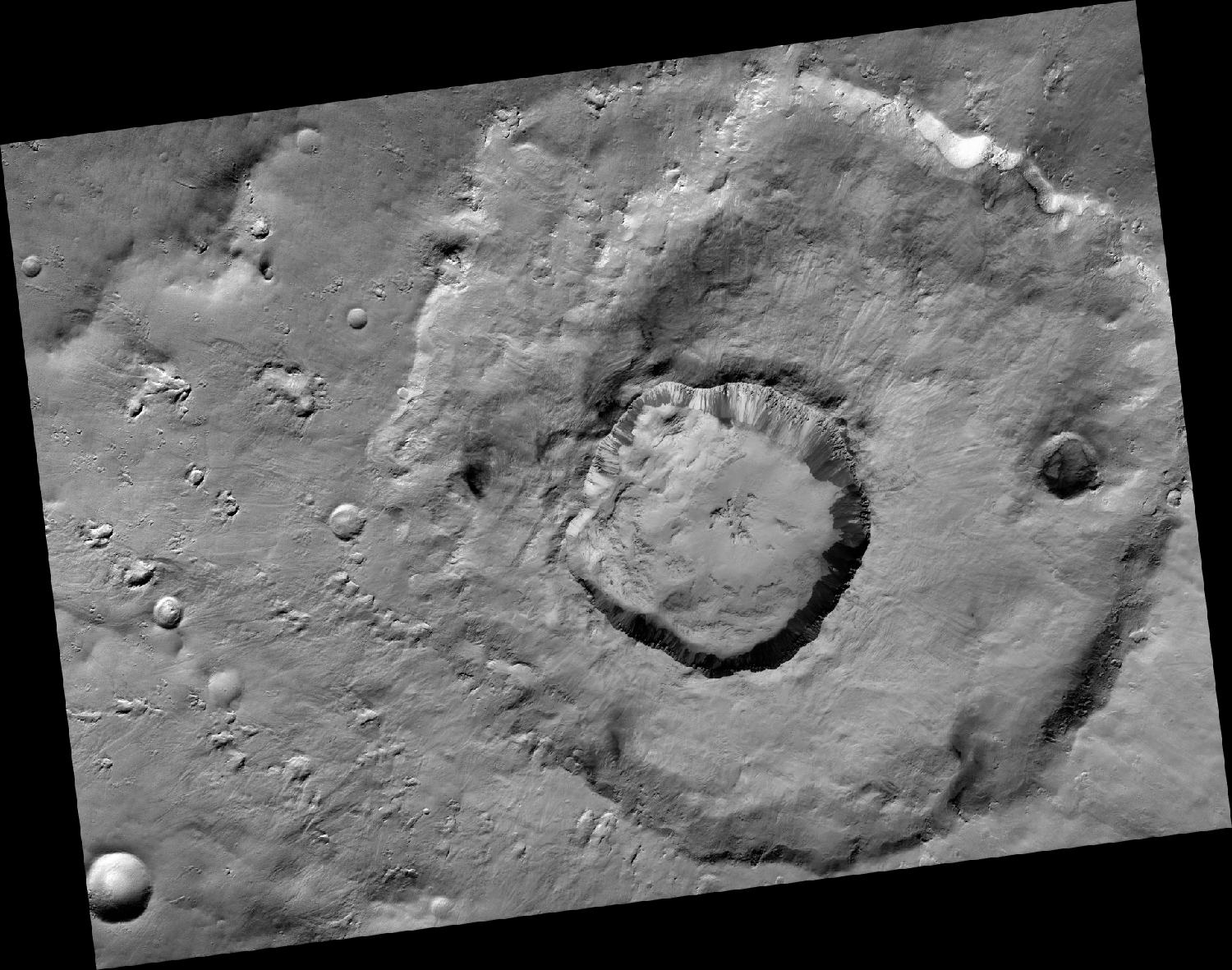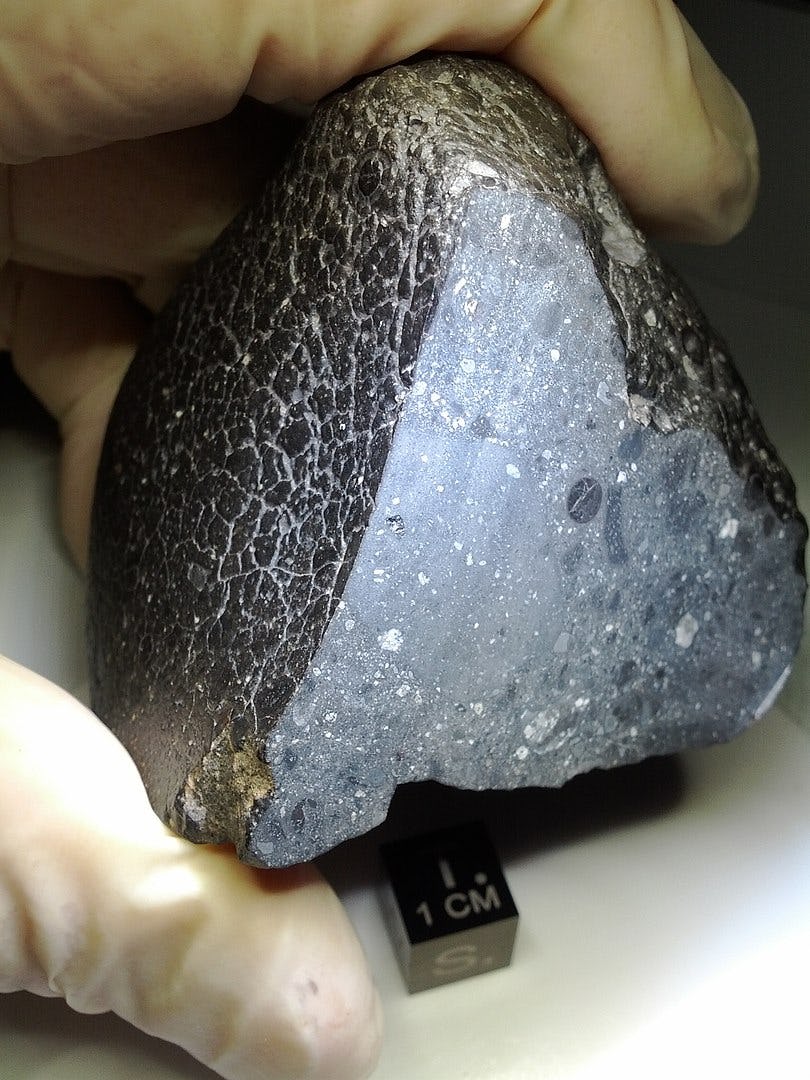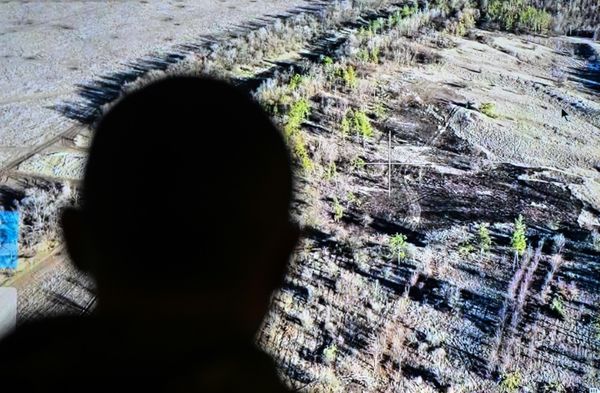
A Martian crater, so unassuming that no one even noticed it until recently, is the source of the oldest — and strangest — Mars rock ever to land on Earth as a meteorite.
Scientists have about 175 samples of Mars rocks here on Earth, courtesy of ancient meteor impacts on Mars that flung pieces of the Martian surface out into space. The meteorite NWA 7034 is strikingly different from all of them. It’s made of up sharp fragments of different types of rock, called clasts, all cemented together into one big chunk. Geologists call this kind of rock a breccia, and NWA 7034 is the only one ever found from Mars.
And some of those clasts are 4.48 billion years old, according to radiometric dating of a mineral called zircon — dating back to the earliest period after Mars formed.
With the help of a machine learning algorithm and a supercomputer, Curtin University planetary scientist Anthony Lagain and his colleagues recently traced NWA 7034’s origins to a single impact crater in Mars’ southern hemisphere. They published their results in the journal Nature Communications.
What’s new – You could call Karratha Crater 1-in-94 million. That’s about how many craters dot the surface of Mars, according to a crater-hunting algorithm Lagain and his colleagues trained. And out of those millions of craters, Karratha was the only one with the right features to be the source of our oldest sample of Mars.

Most importantly, Karratha was big enough to mark the site of an impact that could have hurled rocky debris into the air with enough speed to escape Mars’ gravity. Only 19 out of the 94 million craters were big enough (about 3 kilometers wide) to suggest that kind of impact. The smaller craters mostly clustered around the larger ones.
“Those small craters are actually secondary craters, formed when large debris ejected from the surface following an impact by a large asteroid forming the large craters fall back on the surface,” Lagain tells Inverse.
Karratha Crater was adjacent to the right layers of Martian rock, and information from satellites orbiting Mars revealed that Karratha Crater contained rocks rich in the elements thorium and potassium — just like NWA 7034. The crater’s magnetism was also very similar to that of the Martian meteorite. And, as if Lagain and his colleagues were playing a planet-sized game of Guess Who?, it turned out that Karratha was the only crater that met all of those criteria.
Why it matters — The oldest clasts in NWA 7034 basically tiny time capsules from the first tens of millions of years after Mars formed — and for a planet, that’s like early childhood. And they can reveal interesting details about the planet’s younger years. For example, Lagain says the ancient clasts reveal that young Mars had “a very early volcanism style close to what we observe on Earth, especially in Iceland.”

Knowing where those clasts came from could help put some of those tidbits of information into a wider context — and direct future missions, such as observations from orbit or even a sample return mission like the one scheduled to land on Mars in about ten years.
We now know that area around Karratha Crater — a portion of Mars’ rugged, crater-pocked southern highlands called Terra Cimmeria-Sirenium — has samples of Mars’ oldest geological history lying right on the surface. “This province is an ideal landing site for future missions aiming to unravel the first tens of millions of years of the history of Mars, and by extension, of all terrestrial planets, including Earth,” wrote Lagain and his colleagues in their recent paper.
Here’s the background – But as important as Karratha Crater might be, it completely escaped everyone’s notice until late 2021.
Last year, Lagain and his colleagues used a machine learning algorithm to map about 94 million Martian craters. To teach the algorithm what a crater should look like, the researchers showed it hundreds of high-resolution satellite photos of the Martian surface, with thousands of craters labeled. Then they loaded the algorithm onto a supercomputer at the Pawsey Supercomputing Research Center in Perth, Australia and fed it a much larger set of images.
“It took only about 24 hours to identify about 94 million craters,” says Lagain.
One of those was Karratha. Most known craters on Mars have visible “ejecta rays,” or piles of debris blasted upward by impact that fell to the ground around the crater. Karratha has no ejecta rays, but Lagain and his colleagues’ algorithm spotted the cluster of smaller craters around it.
Lagain and his colleagues named the crater after a city in Australia near some of the oldest known rock formations on Earth, the 3.5 billion-year-old Marble Bar outcrops. (The oldest known rock formations on Earth are 4.28 billion-year-old outcrops of a mineral called amphibiole, dotted with gleaming garnet, along the coast of Canada’s Hudson Bay. That’s still a solid 200 million years younger than the oldest pieces of rock in the NWA 7034 meteorite.)
Digging into the details — Mars has endured a lot of meteor and comet impacts in its 4.6 billion-year history, and Karratha Crater actually marks the spot where a space rock slammed into another, larger crater called Dampier, about 5 million years ago. At the time, Dampier was filled with rocky debris that had been blasted out of the ground by an even earlier impact 30 kilometers away, which left behind a crater called Khujirt Crater.
In other words, the oldest pieces of NWA 7034 started out as part of a 4.48 billion-year-old rock layer in Mars’ southern hemisphere, quietly minding its rocky business. About 1.5 billion years ago, a massive meteor smashed into Mars, blasting melted bits of rock and regolith into the Martian sky. Some of that material fell back to Mars in Dampier Crater, filling it with a 60-meter-deep blanket of relocated bedrock, including bits of what would become the meteorite NWA 7034.
And then, about 5 million years ago, another huge, fast-moving space rock plowed into Dampier Crater. In the process, it flung debris from the Khujirt impact out into space. Eventually, some of that rocky debris landed in the Sahara Desert here on Earth.
What’s Next – Lagain and his colleagues want to use the same methods to trace other Martian meteorites to their craters of origin. “Each Martian rock is a ‘free return sample’ if we know their precise origin on the surface and geological context of formation,” says Lagain.
They’re also teaching their algorithm to recognize craters on the surface of Mercury and the Moon, but for a different reason: to figure out the age of different parts of each world’s surface.
“An older planetary surface being exposed longer to the meteoritic bombardment, it contains statistically more craters than a younger terrain,” explains Lagain. “This method is currently the only one we can use to date extraterrestrial surfaces.”







